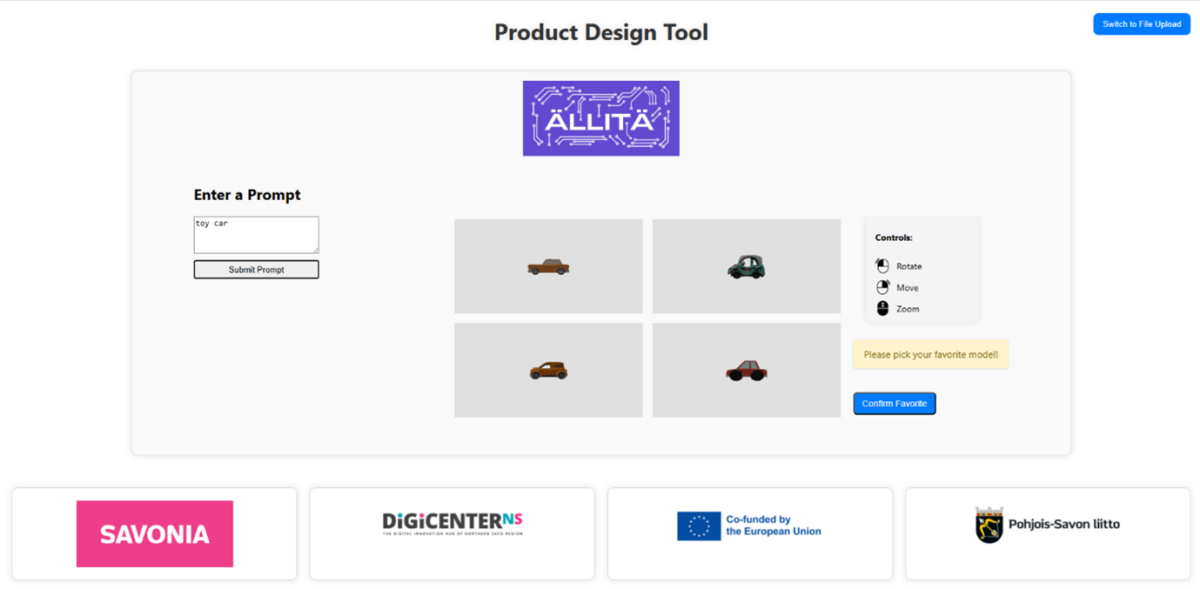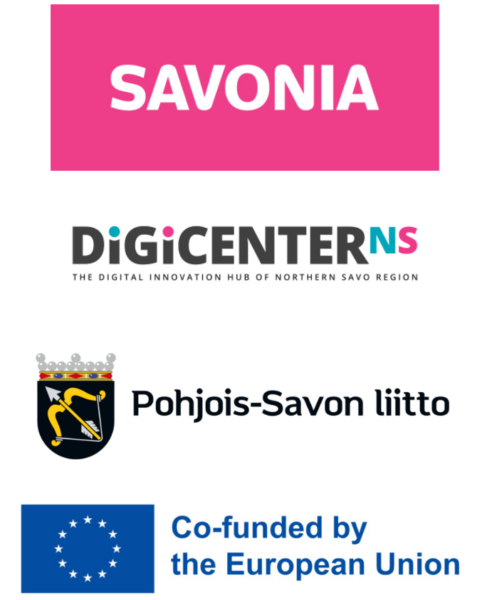
Savonia Article Pro: Product Concept Generation using Open-Source AI Models
Savonia Article Pro is a collection of multidisciplinary Savonia expertise on various topics.
This work is licensed under CC BY-SA 4.0
Generative AI is an integral part of the EU co-financed ÄLLITÄ project, and with that in mind we have continued to explore new potential use cases for it. Previously, we introduced a PDF summary tool, which used Facebook’s Bart open-source model. Now we are presenting a tool which allows users to create 3D models of product concepts based on their text prompts.
We started by finding a model which had the capabilities to generate 3D images based on text. The model which fit our requirements best was Microsoft’s TRELLIS project. This project, developed by the Microsoft Research team, is a group of 3D generation models trained on text prompts or images. With 2 billion parameters, TRELLIS is considered one of the largest open-source models in the 3D generation domain. The two methods that are provided by this model are the Text to 3D and Image to 3D pipelines. (Xiang, Jianfeng, et al., 2023)
TRELLIS was initially deployed on our Nvidia DGX A100 server as a containerized application. Once the model was up and running, the Llama 3.3 generative model was used to further develop our summarization web app. On top of the summarization tool, a new page was added to the website, where users could input text prompts which would result in 3D models. The Text to 3D method from the TRELLIS model was the best fit for us, as we wanted users to present their ideas via text. Figure 1 below shows an example of a fir tree generated by the TRELLIS model.

At its current state, the 3D production model produces four different versions of the requested product. As seen in Figure 2, all four products are displayed to the user, who has the capability to inspect each model from different angles and positions. Each 3D product will have distinct characteristics because they are generated with different seed values. In AI models, a seed value is often used to reproduce results: when the same seed is provided, the model will generate identical outputs as long as the input remains unchanged (Vaghasiya, Nikunj, 2024). In our case, we intentionally assign different seed values to produce diverse variations of the product from the same input. The user can then confirm their favourite model, which will then be displayed on a bigger canvas, allowing for further examination of the final product. The web app also has the option for downloading the final model to the user’s local computer. The resulting file will be a “.stl” file which is compatible with 3D printers, in case the user would like to print the product in real life.

The applications for our Product Design Tool can be widespread across a few industries. For companies working with IoT sensors, there is always a need to protect the sensors, especially when they are deployed outdoors. With this tool users could design specific casings for their sensors, download the models, and 3D print them. Another application is for companies in the video game industry. With our tool the user could create playable (PCs) or nonplayable character (NPCs) designs to include in their game.
As mentioned before, the web application includes the summarization tool as well. That has also been improved, with a new batching approach that allows for summarization of longer PDFs (up to 50 pages). This makes our web app a one stop shop for generative AI tools that could help simplify the work of professionals of various occupations.
Authors:
Shahbaz Baig, RDI Specialist, DigiCenter, Savonia University of Applied Sciences, shahbaz.baig@savonia.fi
Premton Canamusa, RDI Specialist, DigiCenter, Savonia University of Applied Sciences, premton.canamusa@savonia.fi
Laura Leppänen, RDI Specialist, Project Manager, Savonia University of Applied Sciences, laura.leppanen@savonia.fi
Mika Leskinen, RDI Specialist, DigiCenter, Savonia University of Applied Sciences, mika.leskinen@savonia.fi
Aki Happonen, Digital Development Manager, DigiCenter, Savonia University of Applied Sciences, aki.happonen@savonia.fi
References
Xiang, Jianfeng, et al. “Structured 3D Latents for Scalable and Versatile 3D Generation.” Microsoft Research, 2023. Accessed on September 24th, 2025.
Vaghasiya, Nikunj. “Understanding Seeds in AI: The Key to Reproducibility and Creativity.” Medium, 2024. https://medium.com/@nikunj.vaghasiya2050/understanding-seeds-in-ai-the-key-to-reproducibility-and-creativity-edcfd3bf649c Accessed on September 24th, 2025.
